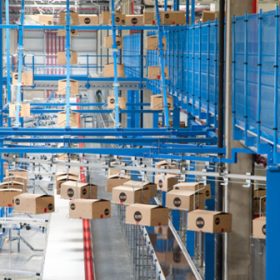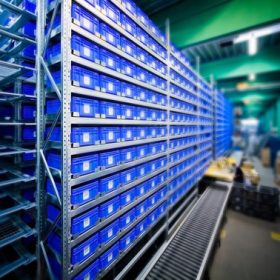Además de mejorar la actividad y la eficiencia en un mercado cada vez más competitivo, la alianza con nuestros socios estratégicos nos permite comprobar in situ el desarrollo de algunos de esos lugares. Muestra de ello es nuestra experiencia en México, donde somos testigos del emergente mercado latinoamericano, cuya carga contenerizada analizamos la semana pasada. Pero si hay un lugar donde poder ser consciente de todo ese potencial oculto es, sin duda, el mercado asiático.
El proceso de crecimiento económico en el que está inmersa la región afecta notablemente a una clase media empoderada cuyo desarrollo social afecta, como por ejemplo en China o India, no solo a ellos mismos como país, sino al mundo en su conjunto. Y por tanto también al comercio. Un dato para reforzar la teoría es que la población de estos dos países representa el 36% de la población mundial.
Datos y estadísticas macroeconómicas aparte, la situación de estos países nos ayudan a entender la emergencia de una nueva clase media asiática con impacto global. Consciente de ello, el gobierno indio lleva lustros buscando financiación y potenciando el desarrollo de sus infraestructuras.
Considerada foco del sector ferroviario para los próximos años, ahora trata de promocionar el comercio por mar, impulsando los sectores marítimo y portuario como creadores de riqueza. El proyecto Sagar Mala, que pretende modernizar los puertos del país y contribuir así a su desarrollo, es el que más expectación levanta, aunque no el único. Esta semana, durante el último Asia Europe Meeting (ASEM) llevado a cabo en Seúl se hablaba, por boca del Cónsul General de Corea, Kyungsoo Kim, del potencial que despierta Thoothukudi para atraer industria, así como toda la zona sur del país. De hecho, la multinacional española Typsa fue la encargada de realizar el estudio de viabilidad del desarrollo de un puerto en Enayam, cerca de Colachel, en el distrito sureño de Tamil Nadu.
Una vez más, India vuelve a gozar de renovada actualidad y sigue siendo un buen destino de operaciones. Cuenta de ello dan el Barça, que abrió su segunda escuela de fútbol en el país el mes pasado y Massimo Dutti, que hacía lo propio en Delhi.[:en]In addition to improving the activity and efficiency in an increasingly competitive market, the alliance with our strategic partners allows us to check on-site the development of some of those places. Proof of this is our experience in Mexico, where we are witness of the emerging Latin American market, whose containerized cargo was analyzed last week. But if there is a place to be aware of all that hidden potential is undoubtedly the Asian market.
The process of economic growth in the region which is immersed, substantially affects middle class whose social development concerns, such as in China and India, not only themselves as a country, but the world as a whole. And therefore also in trading. One thing to reinforce the theory is that the population of these two countries represents for 36% of the world population.
Data and other macroeconomic statistics aside, the situation in these countries help us to understand the emergence of a new Asian middle class with global impact. Aware of this, the Indian government has fifteen years seeking funding and promoting the development of their infrastructures.
Considered focus of the railway sector for the coming years, it is now trying to promote trade by sea, boosting the maritime and port industries as creators of wealth. The Sagar Mala project, which aims to modernize the country’s ports and thus contribute to its development, is the most excitement rises, though not the only one. This week, during the last Asia Europe Meeting (ASEM) held in Seoul the General Consul of Korea, Kyungsoo Kim, explained the potential awakening of Thoothukudi to attract industry and the entire southern region. In fact, the Spanish multinational Typsa was responsible for carrying out the feasibility study for the development of a port in Enayam near Colachel, in the southern district of Tamil Nadu.
Once again, India is enjoying renewed relevance and it remains as a good destination for operations. As Barcelona Football Club did, opening its second football’s school in the country last month and Massimo Dutti, which did the same in Delhi.[:]
 Español
Español



